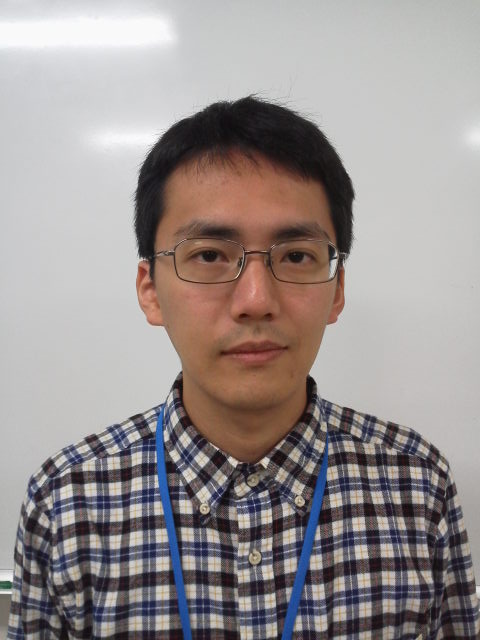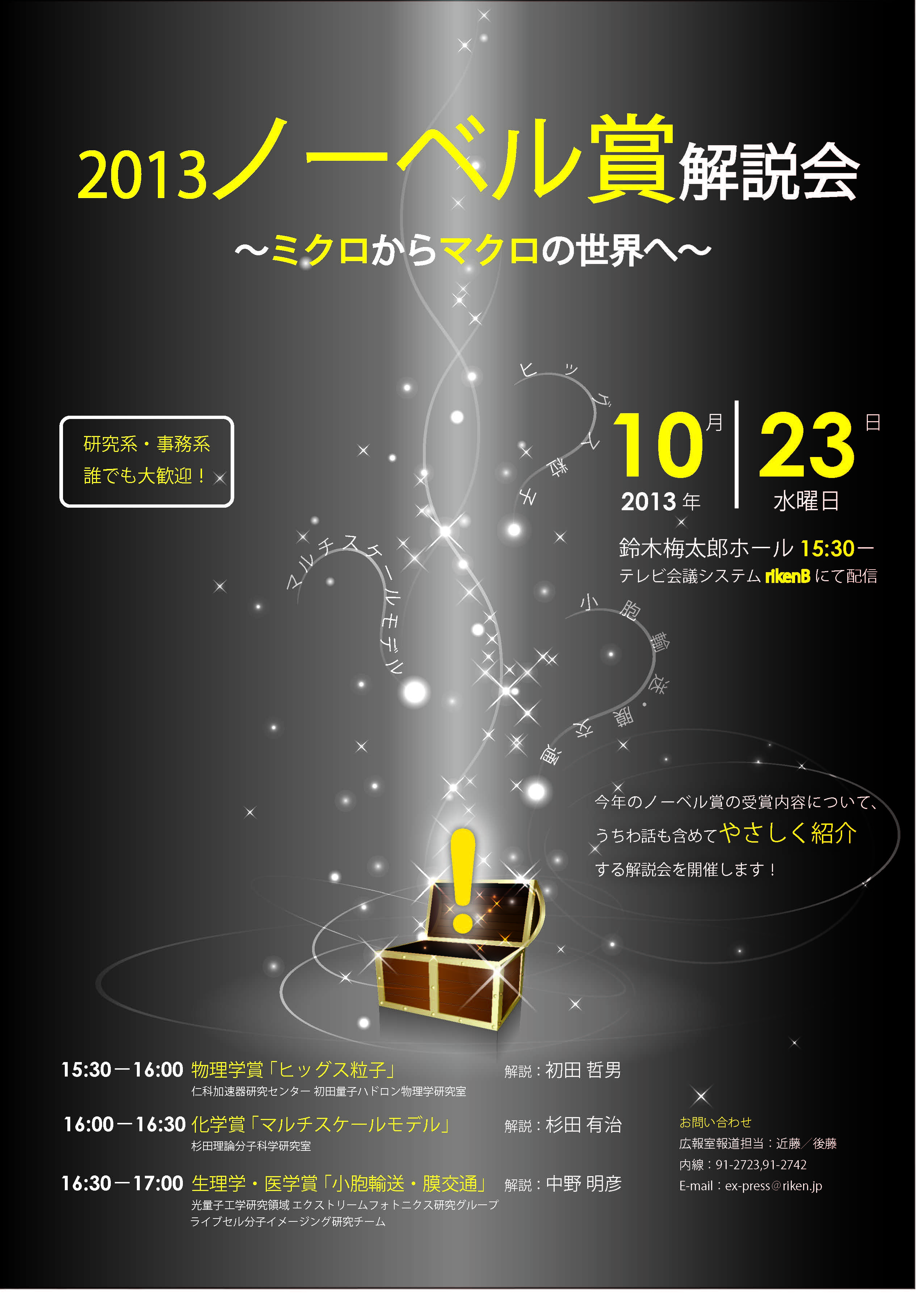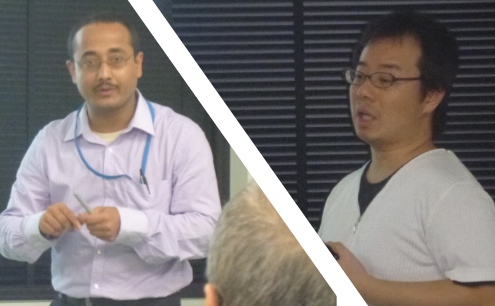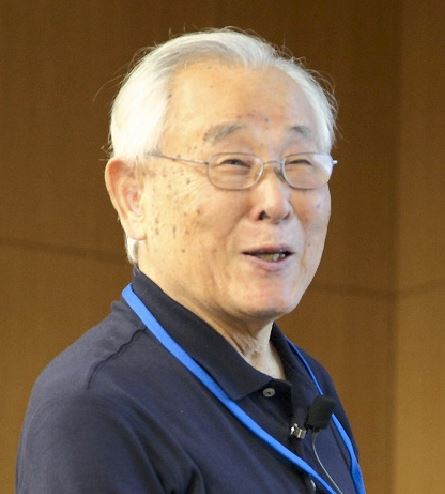|
|
|
|
On This year's Nobel Prize
This year's Nobel Prizes were
Physics: F. Englert and P. Higgs for "Higgs boson"
Chemistry: M. Karplus, M. Levitt and A. Warshel for "Multiscale models"
Physiology/Medicine: J. Rothman, R. Sheckman and T. Sudohof for
"Vesicle traffic"
On Oct. 23 (Wed.) 15:30-17:00 at Suzuki-Umetaro Hall, a public event to
explain
the researches of the above Nobel Laureates is going to be held.
Two of the iTHES scientists will be the lecturers at this event:
Tetsuo Hatsuda and Yuji Sugita for "Higgs" and "Multiscale", respectively.
Please feel free to join. For details, see the web-page:
http://common.riken.jp/contents/rikenbbs/detail/131016-01.html
|
|
|
Event Report
The first iTHES meeting was taken place on October 15th as Typhoon WIPHA (No.26) were nearing. Norihiro Iizuka and Pulak Kumar Ghosh explained "Holography" and "Photosynthesis," respectively. There were lively discussions during and after the talks. Some audience were so inspired that they even coined a new term "Holographic photosynthesis."
|
|
|
Person of the Week
Takuya Kanazawa
Self-introduction
I joined the Interdisciplinary Fundamental Physics Team of iTHES this
September. I am interested in theoretically understanding the
strong-coupling dynamics of Quantum Chromodynamics (QCD), which is
part of the Standard Model of particle physics and lays ground for
modern nuclear physics. This theory explains nearly all of the visible
mass in our Universe, and yet is notoriously hard to handle with
analytical methods due to its complicated non-linear dynamics.
Nowadays, massive numerical simulations have become the most powerful
way of solving QCD.
I received my Ph.D. in Physics (2011) from the University of Tokyo for
my research on an application of random matrix theory to QCD at high
particle density, which proposed a new way to recognize spontaneous
symmetry breaking from statistics of Dirac eigenvalues. Since then I
have been working on random matrices, chiral perturbation theory,
quark confinement and the functional renormalization group.
More recently I've begun to be interested in biology, although it is
not similar to QCD in any sense. For instance the Hamiltonian of QCD
is, say, "god-given", whereas biological systems emerged from
merciless natural selection that continued over billions of years. I
am hoping to construct a mathematical model that captures a certain
aspect of life.
I am looking forward to enjoying discussions with other iTHES members.
9月からiTHES研究員として物理学チームに加わりました、金澤と申します。専門は原子核物理、特に量子色力学(QCD)の理論研究です。QCDは初期宇宙論やコンパクト天体の物理とも関わりがある広い分野で、重イオン衝突実験を通じて実験的にも、また計算機実験等によって理論的にも活発に研究されています。私は学生時代からQCDのクォーク閉じ込めやカイラル対称性の破れに興味があり、学位論文ではある種のランダム行列を用いて高密度QCDの対称性の破れを記述する研究を行いました。その後はドイツのRegensburg大学等を経て、QCDの低エネルギー有効理論や汎関数くりこみ群を用いた研究にとりくんできました。現在は生物学における数理的手法にも興味を持っています。物理の「実験条件(圧力等)を決めると基底状態がひとつに決まるのは当たり前」という見方にずっと慣れていましたが、翻って自然を見ると、ひとつの環境下(たとえば熱帯雨林)において驚異的に多様な生物種が同時に繁栄しており、その「最適解が一意でない」という事実には新鮮な感動をおぼえています。
学際的な環境を生かしていろいろな分野の方とお話しをしたいと思っております。どうぞよろしくお願いいたします。
|
|
|
Visitors
Prof. Toichiro Kinoshita
(Cornell Univ.)
High precision test of quantum electrodynamics and the Standard Model
More about Prof. Kinoshita
Aug. 20th - Nov. 12th, 2013
room 431 (4th floor, main building)
|
|
|
|
|
|



